Bespoken Word – how the MTB hip pack took over the world
Hip packs, fanny packs, bum bags, waist packs – whatever you want to call them carrying your gear around your gut is definitely becoming more popular than putting it on your back. But why and what does that tell us about modern mountain biking?
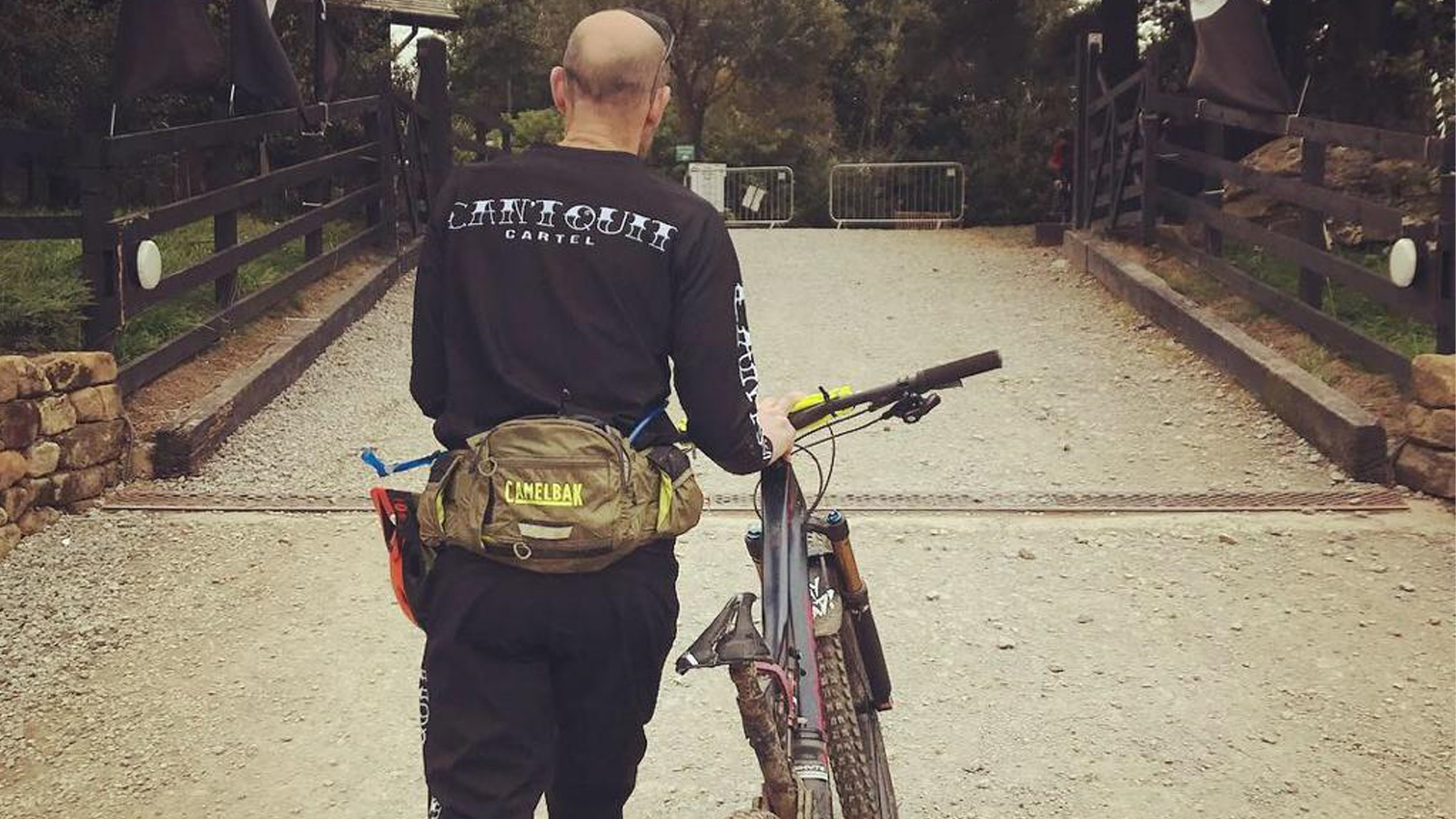
I always used to ride with a backpack. Not a massive one. I’ll leave that to proper mountain bike guides, explorers, and people who probably have a ‘One life, live it’ sticker on the roof tent of their Land Rover. But some sort of backpack with shoulder straps on was my go to way of carrying gear for my first 25 years of mountain biking. It started with the iconic neoprene ‘Hydrate or die’ logo sleeve used to carry the first Camelbak bladders. Then I got a Karrimor Kimmsack ultralight pack for stuffing my sleeping bag and snacks in for overnight ‘Polaris’ MTB orienteering events. When I started testing stuff for a living I could pick and choose from all the best mountain bike backpacks that came in for review but I pretty much always ended up with the latest Camelbak HAWG or MULE. That’s not to say I didn’t rep the occasional German high-tech harness system or the odd Osprey pack along the way for good measure, but whatever the brand, it was generally on my back.
At the time, that was the way most of us mountain bikers moved our stuff around. Camelling along like rolling ramblers and putting up with constantly shifting, sliding, and helmet knocking cargo on every descent.
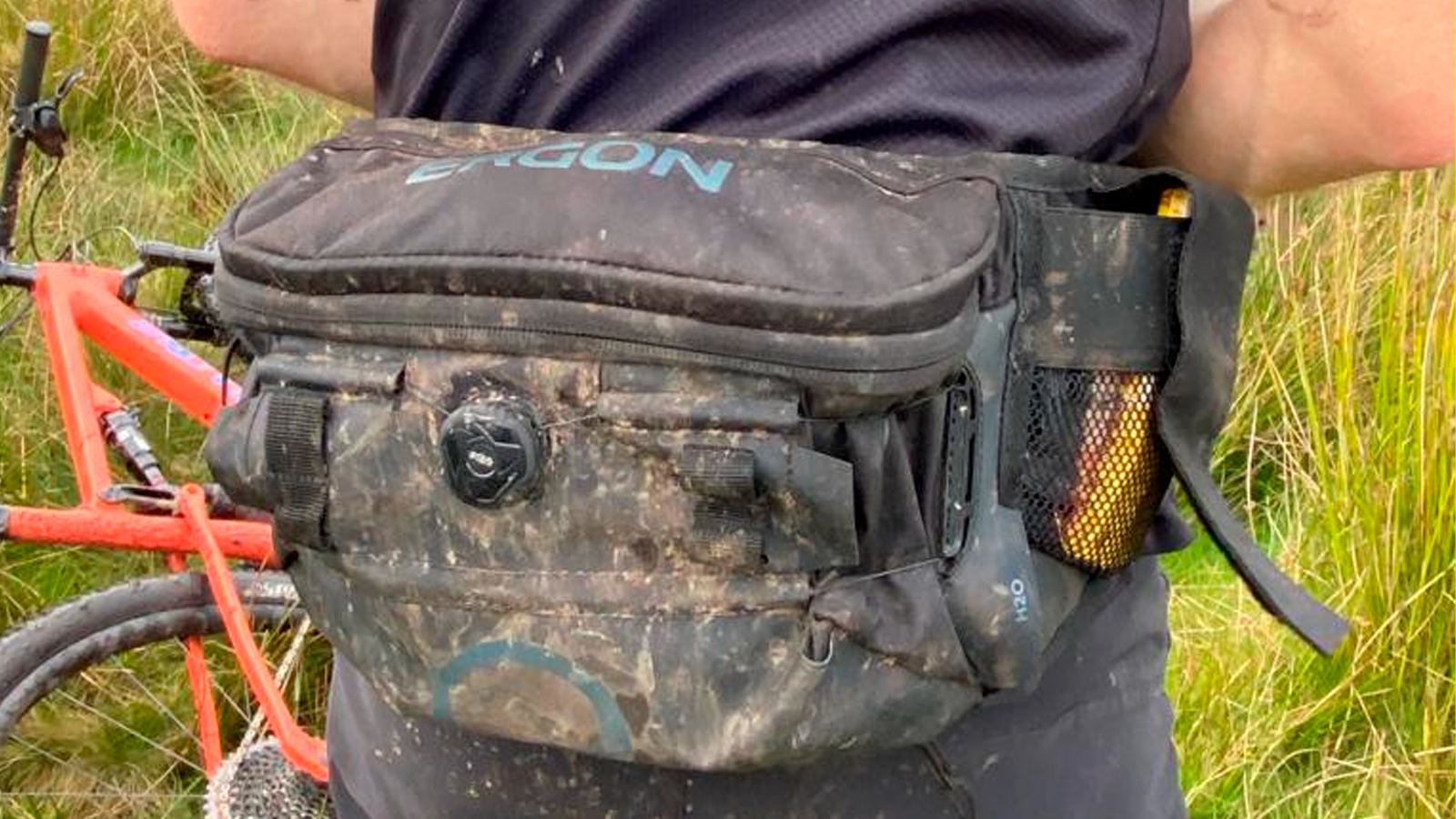
Hip squad – the beginning
I did try dabbling with the best MTB hip packs occasionally – I had a Lowe Alpine one with bottle pouches I really liked way back when. I used to hook that OG Camelbak sleeve onto a North Face pack to create the MTB equivalent of military webbing as well. That was just the latest in a long line of military fetishist combat gear wearing and collecting as a teenager that I still can’t work out why I wasn’t bullied much more for. But it turned out that it was playing with storage that would haunt me all my life, not playing with guns.
To be honest at times, the latter would likely have been less destructive too, as I’ve wasted hours of my life moving kit between seat packs, bottle cage kegs, strap on systems, jacket pockets, hip packs, and backpacks trying to find the perfect cargo answer. And I’m *still* trying to find an under-seat solution that is as satisfyingly spot-on as the homemade tool wrap I used to toe strap under my Selle Italia Turbo saddle in the early 1980s. In fact, thinking about it, across my three rides this holiday weekend I probably spent at least an hour I could have actually been on my bike, faffing about with where to put stuff. And before you ask, no, I didn’t find a neat seat-pack solution. I ended up using a tool keg on the road on Friday, a full-size seat bag to stuff spares and two riders' worth of spare clothes into for the Saturday tandem adventure. And then yesterday I was in a hurry so I gave up trying to be clever entirely and just crammed everything into bulging back pockets and legged it.
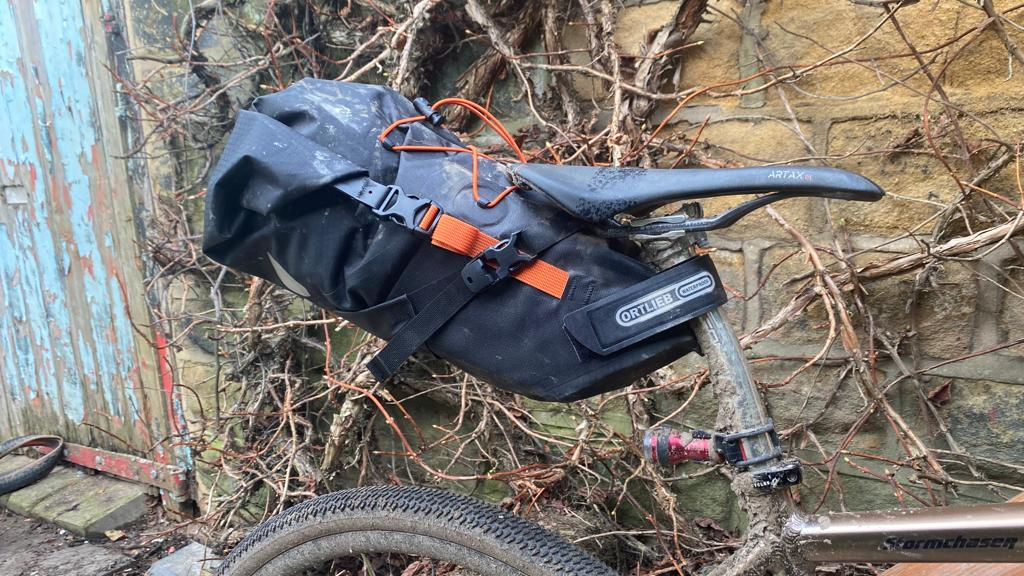
But while I’ve definitely not found my on-bike storage sweet spot, I’ve definitely got over my lower backache, hip flexor intrusion, and sweaty spine and butt crack issues with waist packs. That’s not to say that those things don’t happen, but the bags I’ve tested recently definitely seem to make aches rarer. Or maybe my back and hips have just got used to me hula hooping everything I need for my ride. Because that’s definitely what’s happened in the past few years, to the point where when I was writing up a new waist pack and two rucksacks from Deuter yesterday I’d had to go out on specific backpack testing rides with extra ballast. In contrast, the hip pack has been ridden a ton of times and needed a damn good wash before I could take pictures of it. And it’s one of three different waist packs I’ve got hung up by the workshop ready to go, Including an Ergon BA one that’s now just for drone and GoPro kit. And – a sure sign I’ve not got over my unhealthy load-carrying obsession – I get weird jealousy pangs when I see my mates riding with the other two I’ve handed out recently. Despite the whole point being they can wear them out for long-term data when I’ve not got the time to put into just one bag.
So how have hip packs become my default setting and that of most other riders too?
Is it fashion?
I mean sure there’s always a big component of any change in mountain bike that’s created by media, high profile riders, and cool brands/shops pushing a product. And if enduro mountain biking is the current catwalk then most racers are opting for a mix of hip packs and on-bike storage even though they’re out in the hills all day. But then both hips and backpacks have been around for ages so it’s not like putting your bits around your belly is a new thing. So yeah, fashion is definitely a part of it, but it’s certainly not the sole reason. Not least because mountain biking tends to be pretty intolerant of things that don’t actually work.
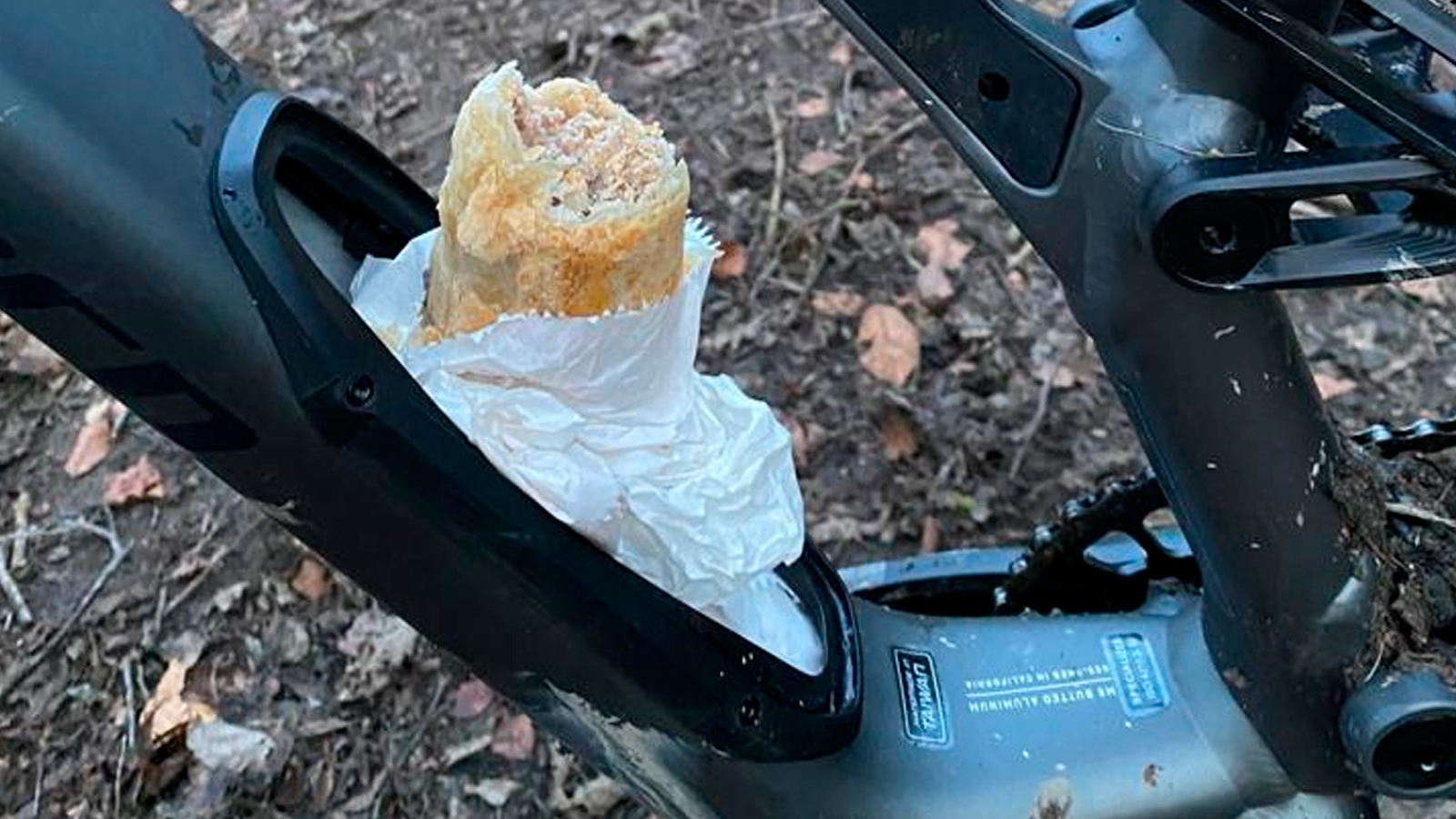
Is it on-bike storage?
Yes, it definitely is, but I realized it’s not in the way I initially thought. While more of us are strapping inner tubes, mini tools, and CO2 canisters onto our mountain bikes that doesn’t work with the bulky items that filled our backpacks.
Where on-bike storage is really threatening to make the backpack extinct is in what’s called ‘bikepacking’ now. Heading out into the hills with the means to stay out there for a while now has its whole luggage range as a badge. You could even argue that a lot of those ‘adventure riders’ have now switched to gravel-style bikes too. But whatever it is, strapping everything under your saddle/onto your bars/ inside your frame is now the done thing, however disastrous this is to your dynamic off-road handling compared to using a backpack.
What has also made a big impact is bike designers remembering to make space for bottle cages on bikes again. Crowded, relatively compact suspension frames were certainly a big drive towards people – (including me) having to use bladders – and therefore backpacks. Now I can fit a fresh bottle into most bikes I can test (even if it's a weird shape, side loading, or underneath the top tube) I don't need a bag for a bladder. That means I don't have to worry about what else I'm sucking into my gut from a murky-looking feed pipe that looks like it was last used for a veterinary enema either.
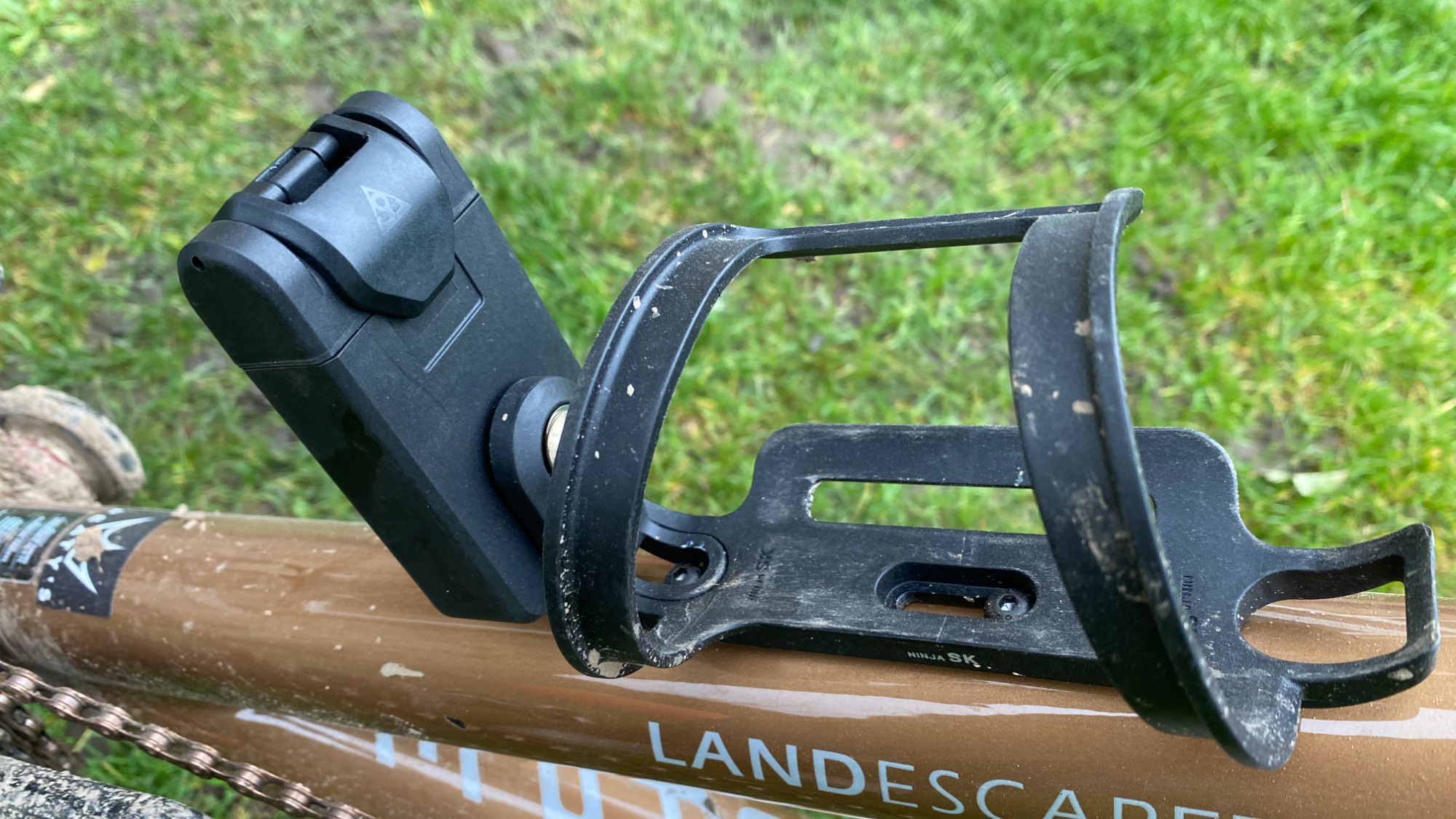
Returning to what most of us call 'mountain biking', is it because the kit has got smaller?
Looking at what I used to fill a bag with I think that’s definitely a factor. I’m still a pump fan (because CO2 cartridges are wasteful and eco-ignorant if you’re not racing), but I now take one tube and a tubeless plug kit, not two tubes. Plus, you can get decent high-volume pumps that are a lot smaller now. At the risk of asking for a random mechanical on my next ride, bikes have got a lot more reliable. I certainly don’t take spare spokes with me anymore, or a cassette remover to get the block off in case the snapped spoke is behind it. It’s been a long time since I’ve needed headset spanners too, and in fact, most bike jobs can now be done with a couple of Allen keys and a Torx wrench.
Again we’re not talking about a whole lot of difference in bulk here though so is it because riding has changed?
I definitely think this is a big factor. The traditional ‘ride off over the hills for hours’ dynamic of mountain biking has definitely shifted – at least in terms of media and manufacturer attention (see gravel for details) to more of a ‘shorter loops out from the trailhead/car park’ vibe. That means we don’t have to carry extra clothing or have space to put it when we warm up. We can leave the pump and tube if it’s only a fifteen-minute push back, and the snacks and drinks can stay there too. But even when I am hitting the hills I’m doing it in a more stripped-down fashion. I’ve stayed clear of mixed ability groups on bigger rides for a long time, not just because I’m an impatient arsehole, but because a small, fast-moving group with shared equipment is far more thermally and tool efficient. That means we can do a three-hour night ride with just a single emergency layer in hip packs, rather than shivering as someone decides to root around in their rucksack for the ‘Nth time. That’s not to say that we don’t have some backpack users with us on some rides, but I always notice they don’t seem to have much in there that you couldn’t fit in a waist pack.

Hip packs are here to stay (for now)
So is it just because they work better? I mean we’re obviously working within size constraints here because there comes a ‘Buckaroo’ point where – however clever the strapping system - you’ve stuffed a hip pack too full to be comfortable. That’s because it strains all that cantilevered weight against your abs and presses it into your lower spine in a fairly merciless way. Even if it is shifting around though, it’s at a much lower point in your overall center of gravity and it’s never going to slide up and bang on your helmet like a backpack. Or if it does, that’s probably the least of your worries. It also leaves your back breezy and free rather than sweaty and there’s no shoulder strap faff or rub to worry about. But then, not having shoulder straps means you actually have to run the hip pack higher than you would center the weight in something like a Wingnut or a Camelbak Skyline. And having just tested those two Deuter backpacks, it’s reminded me just how useful having a bit more storage is. Or just not having to play some sort of cargo Tetris to get everything into the right place. So maybe, it’s actually time for me to rekindle my packing perversion and start having a good look at biking backpacks again. Because if there’s one thing that you need to keep doing as a tester it’s questioning how you’ve got to the opinions you have, and going back over the alternatives to check what’s changed.
In other words, don’t be surprised if there’s a column soon that’s called ‘Bring back the pack’ or something. But not before I’ve written that one about having to reassess my opinion on what I thought was a very sketchy piece of hip pack design but turned out to be really smart. Wow, I bet you can hardly wait for that….

Guy Kesteven has been working on Bike Perfect since its launch in 2019. He started writing and testing for bike mags in 1996. Since then he’s written several million words about several thousand test bikes and a ridiculous amount of riding gear. He’s also penned a handful of bike-related books and he reviews MTBs over on YouTube.
Current rides: Cervelo ZFS-5, Specialized Chisel, custom Nicolai enduro tandem, Landescape/Swallow custom gravel tandem
Height: 180cm
Weight: 69kg
